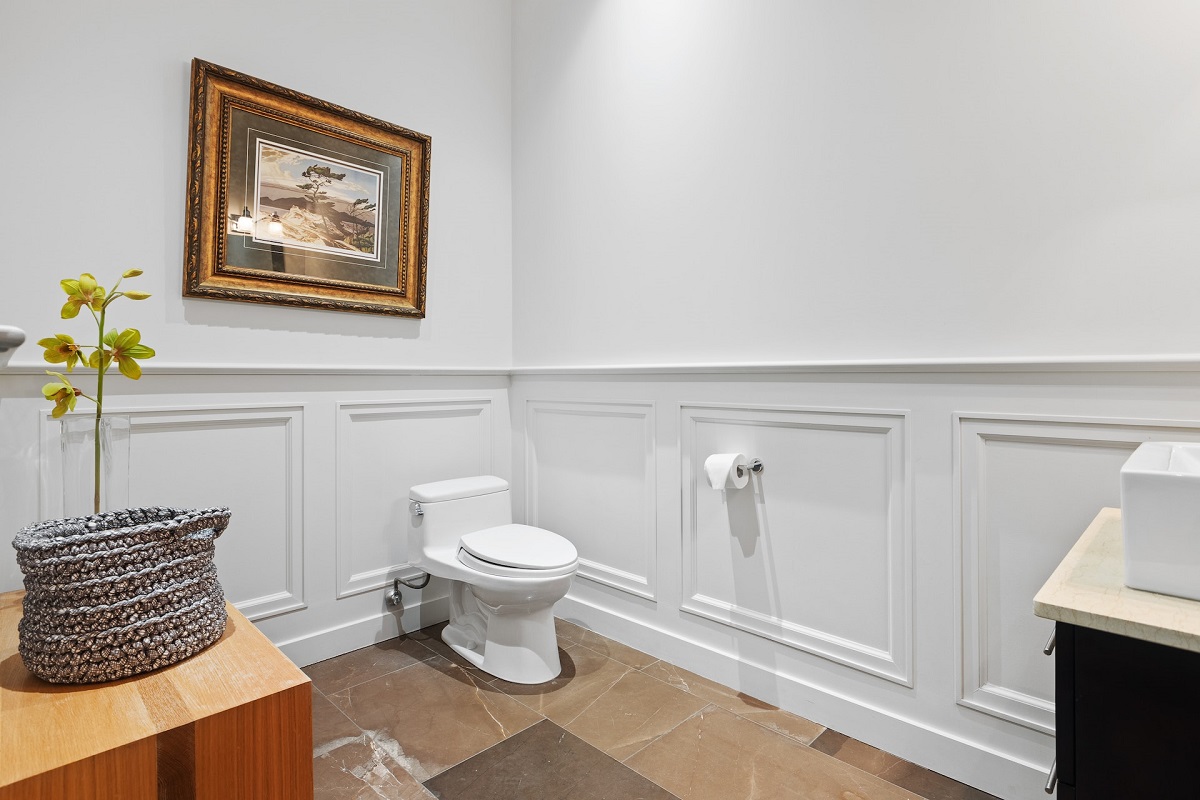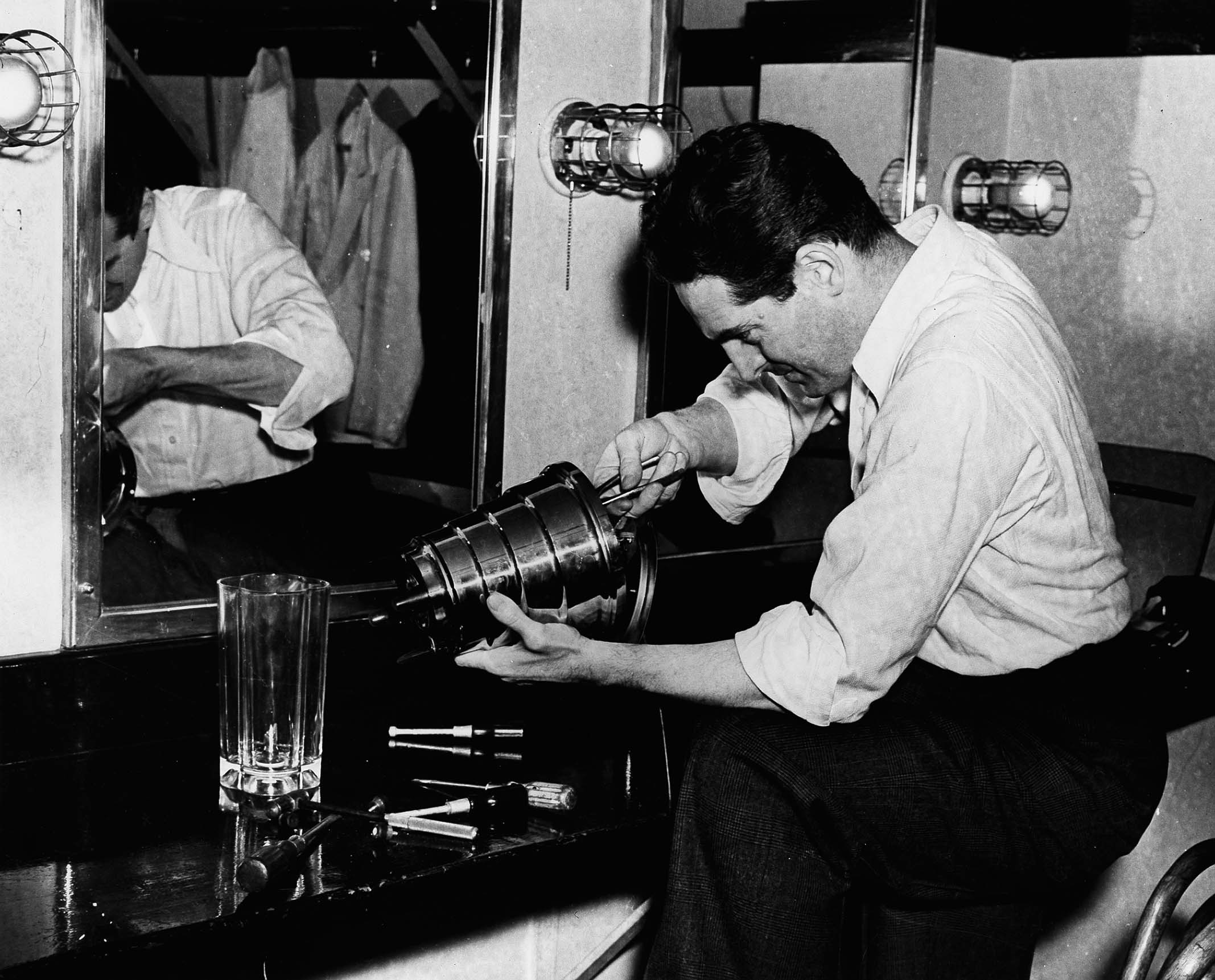

Articles
When Was The Toilet Invented
Modified: January 18, 2024
Discover the history of the toilet and learn when this essential fixture was invented. Read our informative articles for fascinating insights.
(Many of the links in this article redirect to a specific reviewed product. Your purchase of these products through affiliate links helps to generate commission for Storables.com, at no extra cost. Learn more)
Introduction
In today’s modern world, we often take basic necessities like toilets for granted. However, have you ever wondered when the toilet was actually invented? The history of the toilet is a fascinating journey that spans thousands of years, from ancient civilizations to the modern sanitation systems we have today.
Throughout history, humans have always sought ways to dispose of waste in a sanitary manner. In the past, this was not always easy, and primitive methods were used, such as digging holes or using communal pits. As society progressed and developed, so did the need for better sanitation practices.
So, let’s embark on a journey through time to explore the invention of toilets and how they have evolved over the centuries.
Key Takeaways:
- The journey of toilet invention spans ancient civilizations to the modern era, showcasing the evolution of sanitation practices and the pivotal role of toilets in improving public health and hygiene.
- From the refinement of flush toilets in the 16th century to the emergence of modern toilets in the 19th century, the history of toilets highlights the continuous pursuit of improved sanitation for a healthier and more sustainable world.
Read more: When Was The Bathtub Invented
Ancient Toilets: The Birth of Sanitation
The earliest evidence of organized sanitation and toilet systems dates back to ancient civilizations. In the Indus Valley Civilization, which existed around 2500 BCE, archaeologists have discovered advanced drainage and sewage systems, showcasing the ingenuity of these ancient people.
The sanitation practices in ancient Rome also deserve mention. The Romans were known for their impressive aqueducts and sewer systems. They constructed public latrines, which were multi-seat toilets connected to communal sewers. These toilets were used by both the elite and the common people, demonstrating the importance of sanitation in Roman society.
While these ancient toilets were certainly a step forward in terms of hygiene and public health, they were still far from the modern toilets we are familiar with today. These early toilets were often shared communal spaces, lacking privacy and proper sanitation technologies.
However, the existence of these ancient sanitation systems is evidence of early human recognition and efforts to address the importance of proper waste disposal. The invention of these early toilets laid the foundation for future advancements in sanitation.
Indus Valley Civilization: Early Innovations
One of the most remarkable civilizations in ancient history, the Indus Valley Civilization, also known as the Harappan Civilization, flourished in present-day Pakistan and northwest India around 2500 BCE.
Archaeological excavations at Harappa and Mohenjo-Daro, two major cities of the Indus Valley Civilization, have revealed advanced urban planning and remarkable engineering feats, including sophisticated sanitation systems.
The city of Mohenjo-Daro, in particular, showcases the exceptional advancements made in sanitation. The city had an extensive system of interconnected drains and sewers running beneath its streets. These sewers were carefully planned, with manholes and access points for easy maintenance and waste disposal.
The most notable feature of the Indus Valley sanitation systems is the presence of flush toilets. Simple but effective, these toilets consisted of a seat connected to a drain, which would carry waste away into the sewer system. Some of these toilets even had running water, providing a level of comfort and cleanliness that was unparalleled at the time.
The remarkable engineering skills displayed by the inhabitants of the Indus Valley Civilization in developing these early flush toilets are evidence of their advanced understanding of sanitation and their commitment to maintaining a clean and hygienic environment.
It is important to note that the Indus Valley Civilization’s sanitation practices were not limited to the urban areas; they extended to rural settlements as well. Archaeologists have discovered similar sanitation systems in smaller towns and villages, showcasing the widespread importance placed on sanitation and hygiene during this time.
The Indus Valley Civilization’s early innovations in sanitation paved the way for future developments in toilet technology, serving as a testament to their forward-thinking approach to public health and sanitation.
Ancient Rome: Advancements in Plumbing
Ancient Rome is often lauded for its impressive architecture, engineering, and, of course, its advancements in plumbing and sanitation.
The Romans recognized the importance of proper sanitation and developed an extensive network of aqueducts to supply clean water to their cities. These aqueducts, many of which stretched for miles, brought water from natural sources and transported it to public fountains, baths, and private residences.
With a constant supply of clean water, the Romans were able to build intricate plumbing systems that revolutionized sanitation in the ancient world. They constructed intricate sewer systems, known as Cloacae, which effectively carried away waste and prevented the contamination of water sources.
The Roman public latrines were another impressive feat of engineering. These latrines were often multi-seat structures located in public places, such as bathhouses, markets, and public squares. They were connected to the city’s sewer system, allowing waste to be efficiently carried away.
Private residences in ancient Rome also had their own toilets, known as latrinae. These were usually small rooms equipped with a seat and a drain connected to the building’s sewer system. Some wealthy households even had indoor plumbing, with running water that was supplied by aqueducts.
The Romans were not only concerned with functional plumbing but also with providing a pleasant and hygienic experience. Many Roman toilets featured running water, which was used for flushing and providing a continuous flow to ensure cleanliness.
Furthermore, the Romans had a keen sense of hygiene and cleanliness. They believed in the importance of bathing, which was evident in the grand public bathhouses that dotted the cityscape. These bathhouses were equipped with various amenities, including toilets, changing rooms, and hot and cold water baths, allowing citizens to engage in personal hygiene practices.
The advancements in plumbing and sanitation in ancient Rome were truly remarkable and far ahead of their time. These innovations not only improved public health and sanitation but also contributed to the overall well-being and comfort of the Roman citizens.
Medieval Europe: The Decline of Sanitation
While ancient civilizations like the Indus Valley and Rome made significant advancements in sanitation, the medieval period in Europe saw a decline in hygiene practices and sanitation standards. The fall of the Roman Empire and subsequent political and societal upheavals led to a deterioration in sanitation infrastructure and public health.
During the Middle Ages, most European cities lacked proper sewage systems, and waste disposal became a significant challenge. The absence of organized drainage and sewer systems meant that waste often accumulated in the streets, leading to foul odors and unsanitary conditions.
One common practice in medieval Europe was the use of chamber pots. These pots were essentially portable toilets used indoors. However, they were often emptied directly onto the streets, exacerbating sanitation issues and creating health hazards.
Public latrines, which were common in ancient Rome, became scarce during the medieval period. With the decline of centralized power, the upkeep and maintenance of public infrastructure was neglected. As a result, public latrines fell into disrepair, and the concept of public hygiene gradually diminished.
Another significant factor contributing to the decline in sanitation was the lack of access to clean water. Water sources were often polluted, making it difficult to maintain proper hygiene and sanitation practices. This, combined with the absence of a functioning sewage system, further contributed to the unsanitary conditions prevalent throughout medieval Europe.
It is worth noting that not all of Europe during this period experienced the same decline in sanitation. Some regions, particularly those influenced by Islamic cultures, maintained more advanced sanitation practices. Islamic cities, such as Cordoba and Cairo, possessed advanced water supply and sewage systems, demonstrating the stark contrast in sanitation between different parts of Europe.
The decline in sanitation during medieval Europe had severe consequences for public health. Outbreaks of diseases like cholera and the bubonic plague became more common, further highlighting the dire need for improved sanitation systems.
Fortunately, the decline in sanitation during the Middle Ages would eventually lead to a renewed focus on public health and sanitation in the following centuries.
The modern flush toilet was invented by Sir John Harington in 1596 for Queen Elizabeth I. However, ancient civilizations like the Indus Valley and ancient Rome also had early forms of toilets.
Read more: When Was The Chimney Invented
The 16th Century: Toilet Innovations
The 16th century witnessed significant advancements in toilet technology, marking a turning point in the history of sanitation. During this period, various innovations and developments emerged that aimed to improve hygiene and sanitation practices.
One notable innovation during the 16th century was the invention of the flush toilet. While flush toilets had existed in ancient civilizations like the Indus Valley and Rome, the 16th century saw the refinement and popularization of this technology.
Sir John Harington, an English courtier and inventor, is credited with inventing the first flush toilet in 1596. Harington’s design included a water-filled cistern above the bowl, which could be emptied with the pull of a chain, effectively flushing away waste. This invention, known as the “Ajax,” brought a new level of convenience and cleanliness to personal hygiene.
However, it is important to note that flush toilets were still a luxury reserved for the wealthy elite. The majority of the population, both in Europe and other parts of the world, continued to rely on less sophisticated waste disposal methods.
In addition to the flush toilet, other innovations in toilet design also emerged during the 16th century. The introduction of portable chamber pots with lids allowed for more discreet waste disposal, particularly in households without access to indoor plumbing.
The 16th century also saw the construction of the first public toilets in Europe. These public facilities, known as “garderobes,” were often attached to castles, forts, and other public structures. They consisted of a simple hole or chute leading to a pit or moat below, providing a basic means of waste removal for those in need.
Despite these advancements, it is worth noting that the concept of sanitation and proper waste disposal was still not widespread. Many areas, both urban and rural, lacked access to clean water and sewage systems, leading to continued hygiene challenges and public health concerns.
Nonetheless, the innovations in toilet technology during the 16th century laid the foundation for future developments and improvements in sanitation, eventually leading to the widespread adoption of toilets in the following centuries.
The 18th Century: Public Health and Sanitary Systems
The 18th century marked a period of significant progress in public health and the development of sanitary systems. During this time, there was a growing awareness of the link between sanitation and the spread of diseases, leading to concerted efforts to improve public health infrastructure.
One of the key figures in the advancement of public health during the 18th century was Edwin Chadwick, an English social reformer. Chadwick conducted extensive research on public health and sanitation and advocated for the implementation of sanitation reforms.
Chadwick’s work highlighted the importance of proper waste disposal and sanitation in preventing the spread of diseases. He emphasized the need for urban sanitation systems, including improved sewage systems, clean water supply, and waste management practices.
As a result of Chadwick’s efforts and the growing understanding of public health, many cities in Europe began implementing sanitation reforms during the 18th century. This included the construction of sewage systems, the establishment of clean water supplies, and the development of waste collection and disposal methods.
One significant development during this period was the introduction of underground sewage systems. Rather than allowing waste to accumulate in open drains or rivers, cities started constructing underground networks of pipes to carry sewage away from residential areas. This greatly improved hygiene and reduced the risk of waterborne diseases.
Furthermore, efforts were made to ensure a clean water supply for the population. Water filtration systems and reservoirs were built, and clean water was piped directly into homes, replacing the reliance on contaminated water sources.
Alongside these infrastructure improvements, public education campaigns were launched to raise awareness about the importance of personal hygiene and proper waste disposal. Citizens were encouraged to use toilets and adopt hygienic practices to maintain their own health and contribute to the overall sanitation of their communities.
Although these advancements in public health and sanitation were significant, it’s important to note that access to improved sanitation varied across different regions and social classes. The urban elite generally had better access to sanitation facilities compared to those in rural areas or lower socio-economic groups.
Nevertheless, the 18th century marked a turning point in the history of sanitation, with the recognition of the significance of public health and the implementation of measures to improve sanitation infrastructure and practices.
The 19th Century: The Modern Toilet Emerges
The 19th century was a pivotal period in the evolution of toilets and sanitation. It was during this time that the modern toilet, as we know it today, began to take shape, revolutionizing sanitation practices and improving public health.
One of the most significant advancements was the invention of the S-trap toilet in 1775 by Alexander Cumming. This design featured a curved pipe, which created a water seal to prevent foul odors from entering the bathroom. The S-trap laid the foundation for modern toilet designs and became a standard in many households.
However, it was the invention of the flush toilet by Thomas Crapper in the late 19th century that propelled toilet technology into the modern era. Crapper’s flush toilets incorporated a valve at the bottom of the bowl and a siphoning mechanism, allowing for efficient waste removal with the press of a lever.
The invention of the flush toilet played a significant role in improving sanitation and hygiene. It facilitated the removal of waste with a large volume of water, effectively reducing the risk of contamination and the spread of diseases.
As access to clean water became more widespread during the 19th century, the popularity of the flush toilet grew. Cities began implementing water supply and sewage systems to provide clean water and remove waste efficiently. This led to the rise of indoor plumbing, with toilets connected to the sewage system becoming increasingly common in households.
The advent of the modern toilet also coincided with advancements in sewage treatment. With the implementation of sewage systems, wastewater was directed to treatment plants, where it was filtered, treated, and safely disposed of. This further improved sanitation and reduced environmental pollution.
Furthermore, the 19th century saw efforts to improve the design and utility of toilets. Innovations such as the introduction of the pedestal toilet, where the bowl is raised on a pedestal for aesthetic purposes, and the addition of cisterns with water-saving mechanisms, further enhanced the efficiency and convenience of toilets.
By the end of the 19th century, the modern toilet had emerged as a vital component of sanitation infrastructure. Its widespread adoption and continual improvements in design and function have significantly contributed to public health, hygiene, and overall quality of life.
The 19th century marked a pivotal moment in the evolution of toilets, transforming them from simple waste disposal mechanisms to a vital part of modern sanitation systems.
Conclusion
The invention and evolution of toilets throughout history have been instrumental in shaping our modern approach to sanitation and public health. From the ancient Indus Valley Civilization to the innovations of ancient Rome, and the advancements of the 16th century and beyond, toilets have undergone remarkable transformations.
The ancient civilizations of the Indus Valley and Rome recognized the importance of sanitation, developing sophisticated drainage systems and flush toilets. These early innovations laid the foundation for future developments in toilet technology and public hygiene practices.
However, as the Roman Empire fell and the Middle Ages emerged, sanitation practices declined in Europe. The absence of proper systems for waste disposal led to unsanitary conditions and increased health risks.
It was during the 16th century that flush toilets were refined and popularized, marking a significant milestone in toilet technology. The 18th century witnessed a renewed focus on public health and the development of sanitary systems, with improved sewage systems and clean water supplies becoming a priority.
In the 19th century, the modern toilet as we know it emerged, with the invention of the S-trap and the flush toilet. With advancements in indoor plumbing, sewage treatment, and design, toilets became an integral part of sanitation infrastructure, contributing to improved public health and hygienic practices.
Today, toilets have become an essential aspect of our daily lives, representing the culmination of centuries of innovation and the collective efforts to maintain cleanliness and promote public health. From homes to public facilities, the importance of proper waste disposal and sanitary practices cannot be emphasized enough.
As we move forward, it is crucial to continue investing in modern sanitation systems and spreading awareness about the importance of proper hygiene. Advancements in water-saving technologies, waste management practices, and sustainable solutions will play a critical role in ensuring a clean and healthy future for all.
The journey of the toilet’s invention and evolution teaches us the value of sanitation and the impact it has on our well-being. Let us not take for granted this essential invention that has profoundly shaped our lives and continue striving for improved sanitation practices in the pursuit of a healthier and more sustainable world.
Frequently Asked Questions about When Was The Toilet Invented
Was this page helpful?
At Storables.com, we guarantee accurate and reliable information. Our content, validated by Expert Board Contributors, is crafted following stringent Editorial Policies. We're committed to providing you with well-researched, expert-backed insights for all your informational needs.















0 thoughts on “When Was The Toilet Invented”